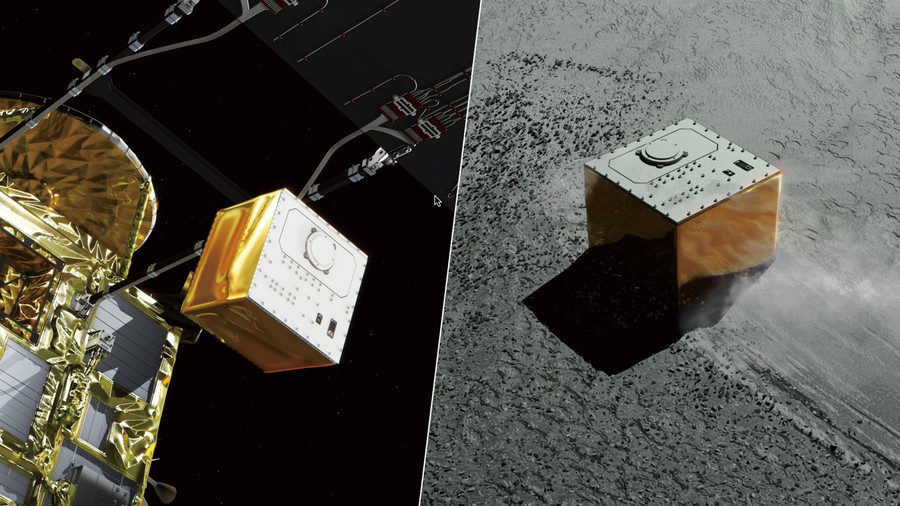
The shoebox-sized French-German Mobile Asteroid Surface Scout, or MASCOT for short, separated from the Hayabusa2 (Japanese for 'falcon') 'mothership' to become the latest member of the bold mission which is attempting to unravel the mysteries of our origins and the beginning of the universe.
The 10kg (22-pound) device ejected at an altitude of 51 meters above the asteroid and descended in a freefall 'slower than an earthly pedestrian.' During this tense time, the team successfully tested the craft's camera and magnetometer.
"It could not have gone better," explained MASCOT project manager Tra-Mi Ho from the DLR Institute of Space Systems. "From the lander's telemetry, we were able to see that it separated from the mothercraft, and made contact with the asteroid surface approximately 20 minutes later."
MASCOT will remain largely immobile on the Ryugu asteroid's boulder-strewn surface, unlike its more active rock-hopping companions the Minerva-II rovers. MASCOT will make one initial, roughly 200-meter, jump upon landing on the space rock's southern hemisphere before self-righting and commencing sampling.
It will work autonomously using pre-prepared command sequences. The plan is to self-right before conducting measurements for several hours, studying the asteroid's mineralogy, surface temperature and magnetic field. If all goes well during the initial stage, it may be directed to make several further jumps but nowhere near as many as the Minerva-II rovers given the device's 16-hour battery life.
"With MASCOT, we have the unique opportunity to study the Solar System's most primordial material directly on an asteroid," said DLR planetary researcher Ralf Jaumann.
The Hayabusa2 will deploy a fourth device later this month. The so-called 'impactor' will explode above the asteroid, inserting a two-kilo copper payload into the blast crater created. The probe will then hover closer to the asteroid, extend its robotic arm and collect samples from the blast site.
These samples may hold answers to some of the biggest questions about the origins of the universe and life itself. The material will have been spared millennia of solar winds and radiation.
The one-kilometer-wide Ryugu asteroid is currently 300 million kilometers away and the Hayabusa 2 probe is not expected to return to Earth until December 2020. Current data suggests the asteroid is composed of nickel, iron, cobalt, water, nitrogen, hydrogen and ammonia.



If you are making up stories then you would throw in wild, exaggerated claims
I don't believe a small bot sitting on a rock is going to "unlock the origins of the universe"